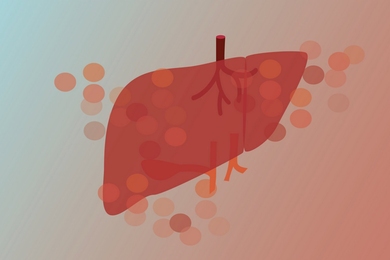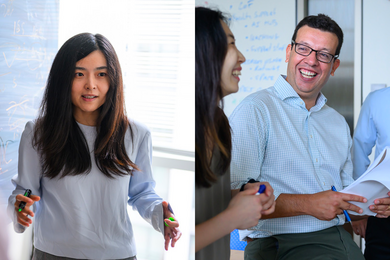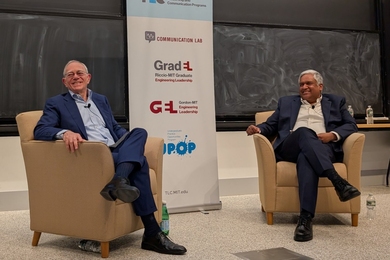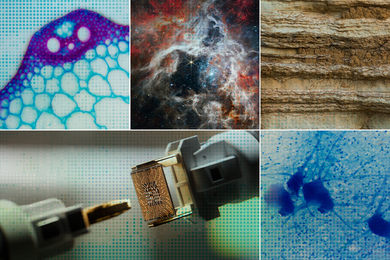Several robots, their creators, the author of the just-published book, Robo Sapiens,and editors from Wired Magazine kicked off the first international conference on humanoid robots at MIT last week.
"The robots are coming, they're getting into our homes, and they'll change the world in many ways," said Professor Rodney Brooks, director of the Artificial Intelligence Lab (AI Lab). He was speaking at the opening reception for the conference, which was so tightly packed with humans (and one robot) that the lights went on and off as people brushed against wall switches.
Posters of the September cover of Wired greeted attendees as they stepped out of elevators at the AI Lab. The cover featured MIT Mechanical Engineering Graduate Student Dan Paluska and M2, the two-legged humanoid robot he's developing.
Professor Brooks' talk focused on robots in the home and how they'll affect our lives. He was preceded by a slide show featuring the subjects of Robo Sapiens, a book about humanoid robots by Peter Menzel and Faith D'Alusio (MIT Press, September 2000).
Robots are currently analogous to the computers of the late 1970s, Professor Brooks said. "There were big computers around then, but real people couldn't touch them." And just as the first computers came into the home as games, robots are making inroads as toys like Furbies and Aibo (Japan's robotic dog). Professor Brooks, who is also chairman of iRobot Corp., noted that a robotic baby, complete with facial expressions and moods, will be on the market soon (it was developed by iRobot and Hasbro).
"Building things as toys pushes down prices, allowing entrance into the home. So we'll see more robotic toys," predicted Dr. Brooks, the Fujitsu Professor of Computer Science and Engineering.
How will robots affect our everyday lives? For one, "we will become used to having autonomous and semi-autonomous mobile devices in our daily interactions," Professor Brooks said. We'll also interact with systems that have some sort of emotional content.
"We have some vague notions of how robots will be used," he said, but as with the early computers, "we're probably completely wrong about how they'll be used in 20 years."
An AI Lab open house following the talks by Professor Brooks and colleagues included demonstrations of Cog, a humanoid robot with torso and head, MIT Leg Lab robots like M2, and a variety of robots from outside MIT (yes, Aibos really do behave like puppies).
The two-day Humanoids2000 conference also featured technical talks and posters. It was sponsored by the Institute of Electrical and Electronics Engineers.
A version of this article appeared in MIT Tech Talk on September 13, 2000.






